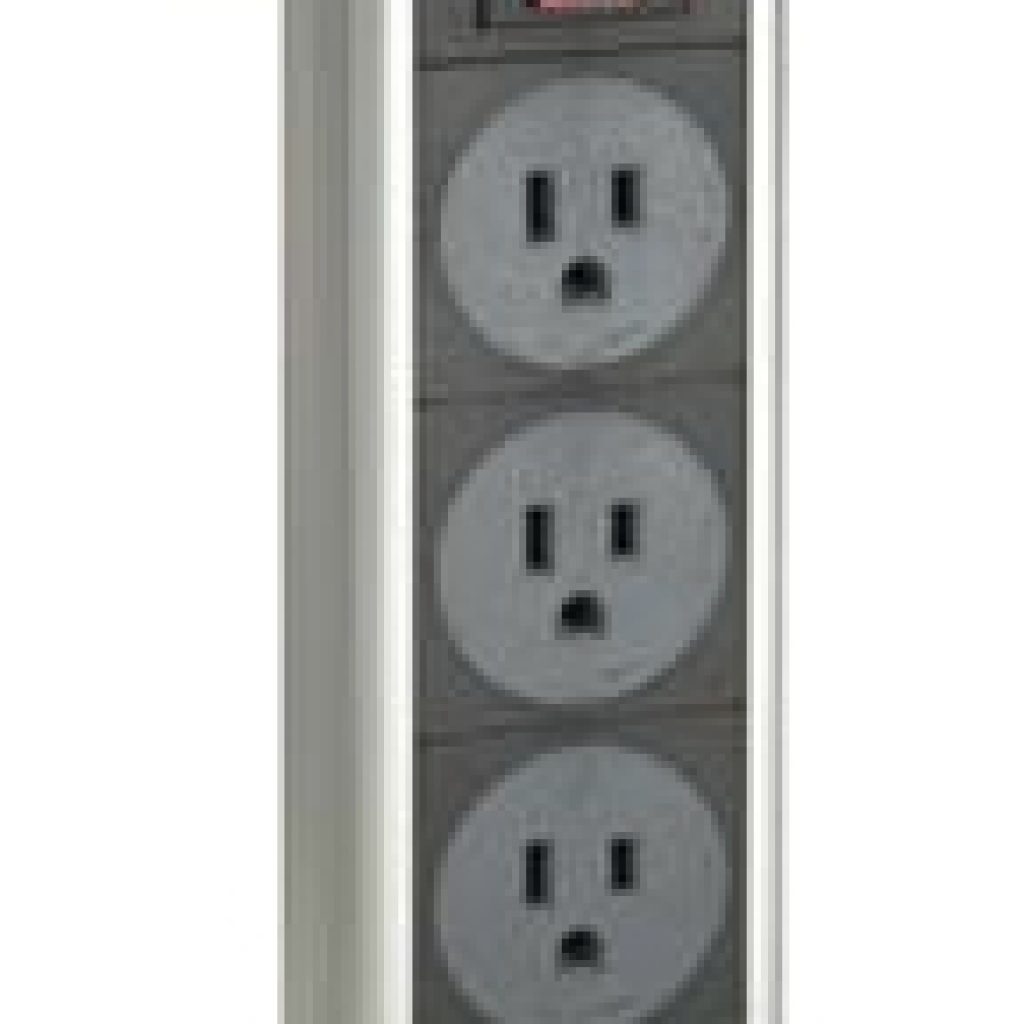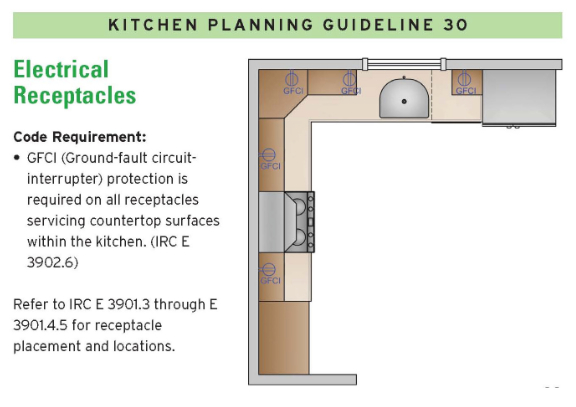You might ask: “What’s so special about an electrical receptacle?” An outlet: something basic, overlooked, and uninspiring, right? When updating a kitchen, however, more electrical receptacles are almost always required. Some standard interpretations of current building codes require that there be no more than 24″ horizontally between any 2 receptacles located in the counter backsplash. No applicable outlet shall be more than 20″ above the countertop. Any surface measuring at least 12″, including an island or peninsula, shall have an accessible outlet. There are also minimum requirements that apply when locating outlets around the sink or cooktop. These are all pretty common standards, however, other state and local building codes may require even more specifics when it comes to outlet location.
Fortunately for home owners, they really won’t have to worry about the exact locations and requirements for new outlets because they will have typically contracted an electrician who will be well aware of the rules for how many and how often each outlet can be installed. A good electrician will not only know the rules but will consult the general contractor and or homeowner when there is a specific outlet location discrepancy or there is an esthetic decision to be made. He will also be in communication with the tile setter, countertop fabricator, and any other tradesman who will be affected by where electrical boxes are located. The electrician will also be on-hand when the inspections are conducted and can make reasonable requests to the inspector if specific allowances are needed.
As a remodeling contractor we often hear our customers ask during the design phase: “Do we really need all of these outlets?” Our answer is “yes.” For one reason, the code has been established to eliminate any dangerous situations where cords are stretched across the sink or cooktop. An island needs to have at least 1 outlet (maybe more depending on its size) because it would be unsafe
and ridiculous to stretch an extension cord across a walkway to plugin an appliance. In updating your kitchen you also have the chance to properly wire and install GFCI outlets which must be used in all kitchen counter locations to protect users whenever water is present. When you weigh out the cost of a few extra outlets vs. the convenience of always having power nearby it is usually more than enough proof that more outlets are a must in a modern kitchen.
When discussing outlets, wiring, and the overall electrical design of the new kitchen we get excited to inform our clients of the many new options that are on the market. There are numerous colors, designs and outlet/cover plate combinations that can be selected to fit the new kitchen style. You can also incorporate multipurpose plugins that feature built-in usb ports now available from Leviton (as seen in the photo right). Each kitchen remodel is certainly unique and homeowners jump at the chance to make their kitchen especially functional as well as esthetically pleasing. Some homeowners enjoy having their outlets hidden out of sight when not in use (see island outlet below). Popup power strips such the “Kitchen Power Grommet” from Doug Mockett & Company (2 photos above) have become extremely popular with remodeling homeowners. The design phase is a good time to also discuss our homeowner’s preference for outlet locations within cabinet panels, back splashes, and even drawers. This is the time when the kitchen canvas is clear and we can suggest locations and implement our customer’s preference for where they foresee needing access to power.
The diagrams are courtesy of National Kitchen & Bath Association
Look for our next post: “Let the Light Shine on Your New Kitchen”
Are you ready to start your Kitchen Renovation?
Contact Us Today to Schedule a Free Consultation
Is there another area of your Home that we can offer you our services?

